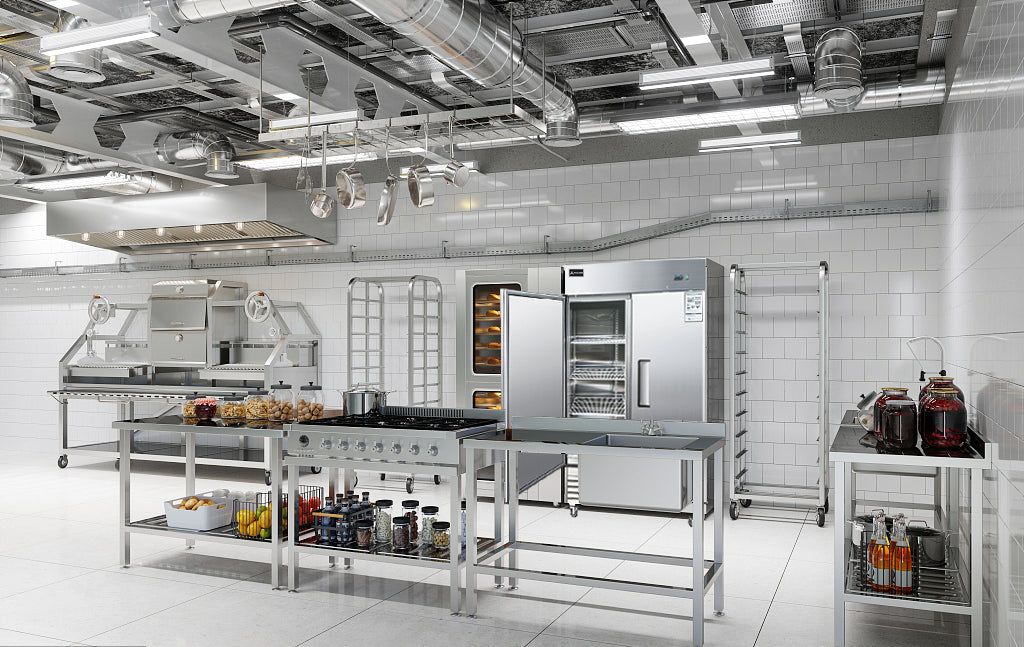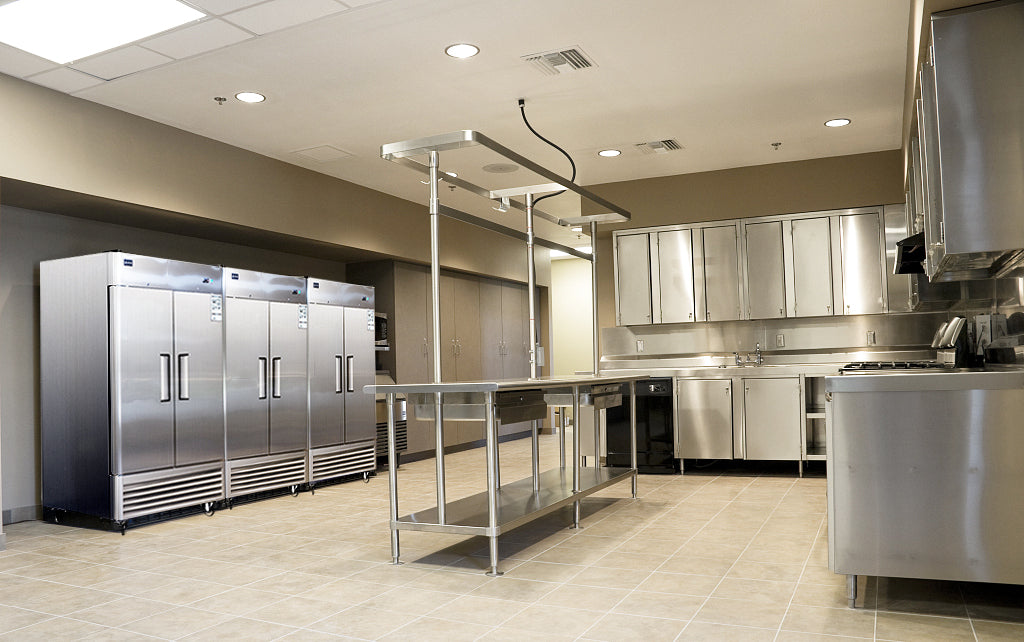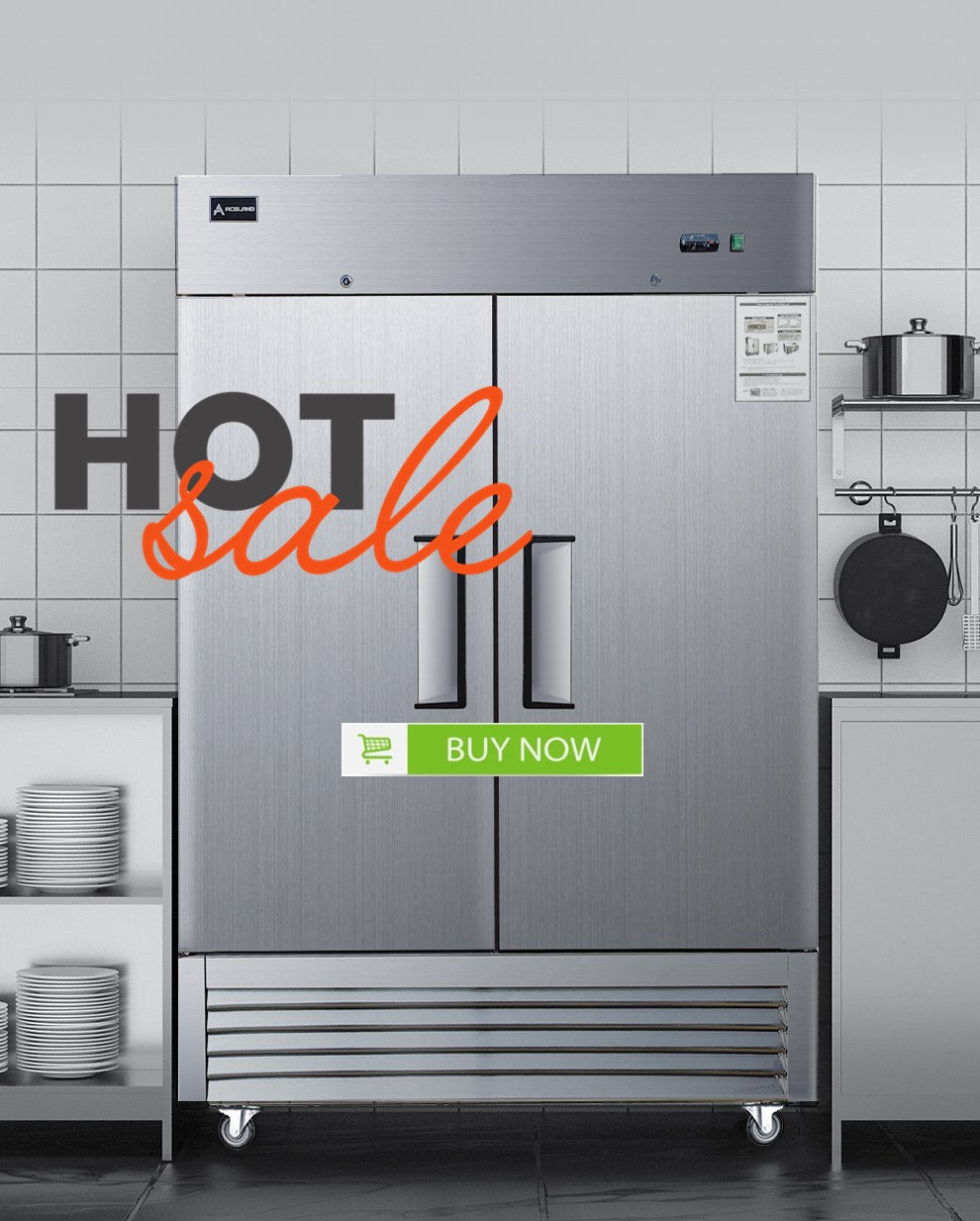Ownership Cost of Commercial Refrigeration
When making any large purchase, the buyer must consider not only the upfront price but also the long-term costs associated with maintenance, repairs, and everyday usage throughout the unit's life. These factors, known as indirect costs, may not be immediately apparent but represent ongoing expenses tied to the equipment. Often, units with a lower initial cost can have higher indirect costs, meaning that a seemingly affordable refrigerator could end up being more expensive over its lifetime. While calculating the total cost of ownership isn't an exact science, estimating a unit’s long-term expenses can help guide you toward a more informed and prudent purchase.
Direct costs involved in purchasing a commercial refrigerator are relatively straightforward: the cost of the unit, as well as any applicable taxes or delivery charges. However, you’ll also need to consider several indirect costs for each refrigeration option you’re evaluating.
Installation
The first indirect cost to consider is installation. For most commercial refrigeration units, this cost is minimal—typically requiring only an hour or two of labor for unpacking, assembly, and leveling. However, if in-house staff handles the installation, user error (such as improper leveling) could lead to issues like leaks or a frozen evaporator. These malfunctions are usually easy to fix, but they may result in an unexpected service call, which is often not covered by warranty.
Some models, such as walk-in coolers or units with remote refrigeration, require professional installation. Though this comes with higher installation costs, it can reduce strain on your building’s HVAC system by moving the condenser heat outside. This can ultimately save money on utilities, particularly in moderate climates, where a remote unit is often more efficient than a self-contained refrigerator operating in a hot kitchen.
Energy Usage
The long-term cost of powering your refrigeration unit is another important indirect cost to consider. The impact of this cost on your overall total cost of ownership will depend on local energy prices. If you're unsure of what to expect, refer to the U.S. Energy Information Administration’s Electric Power Monthly report for regional power cost data.
The energy efficiency of a refrigerator is influenced by many factors, including:
- Insulation: A unit’s R-value indicates how well it resists heat penetration. Better insulation generally leads to more efficient energy use.
- Ambient temperature: The temperature of the environment where the unit operates affects its energy efficiency. The hotter the surrounding air, the harder the compressor must work to maintain the desired internal temperature.
- Motor type: Brushless motors (also called electronically commutated motors) are typically more energy-efficient than traditional brushed motors, producing more torque per watt. Many modern units combine these motors with microprocessor controls for added efficiency.
- Door type: Glass doors, while less insulated than solid doors, offer the benefit of allowing you to see the contents without opening the door, which can help maintain internal temperature. For the best insulation, look for units with double- or triple-paned, gas-filled glass doors.
To ensure energy efficiency, look for the ENERGY STAR certification. ENERGY STAR-rated units adhere to strict power consumption guidelines, saving money on utilities over time. Additionally, many utility companies offer rebates or tax credits for ENERGY STAR equipment, further reducing the cost of ownership.
Regular Maintenance
Indirect costs don’t always appear as specific line items in your budget. Sometimes, they come in the form of employee payroll for maintenance. When calculating maintenance costs, it’s important to understand the time commitment required for upkeep. While most commercial refrigerators require basic maintenance, some models are quicker and easier to service, translating to lower labor costs over time.
Routine tasks like checking the temperature—sometimes multiple times a day—are critical for food safety and may also be part of a HACCP plan. Many economy refrigerators have thermostats located inside the cabinets, requiring the door to be opened to read the temperature. This consumes time, allows warm air inside, and forces the compressor to work harder to cool the interior. Newer models often display temperatures on exterior dials or digital screens, making it easier to check the temperature without opening the door.
Regular cleaning is another important maintenance task. Models designed for easy cleaning—such as those with coved corners, removable shelving, and snap-in gaskets—can save time and money. Cleaning components like evaporator and condenser coils and fan blades should also be a priority, as easy access can help ensure they are properly maintained, contributing to long-term efficiency.
Additionally, replacing worn parts like door gaskets, hinges, and shelves is an ongoing task. Investing in units with durable, easy-to-replace components can save money on replacements over time.
Service
Service calls are an inevitable part of owning any piece of equipment. Understanding the potential costs of these calls is essential for estimating a unit’s total cost of ownership. The durability and reliability of the unit play a significant role in how often repairs will be needed. A well-built unit with accessible parts and self-diagnostic features can help reduce the time and cost of service visits.
The warranty provided with the unit is a key factor when considering service costs. Be sure to understand what is covered—some warranties offer different terms for parts, labor, and the compressor. Although units with stronger warranties may come with a higher initial price, they can save you a significant amount on service costs in the long run. A good warranty also typically indicates a higher-quality unit, which may have fewer issues over its lifespan.
Lifespan
Finally, it’s crucial to consider the lifespan of the unit. A refrigerator that costs half as much as another may seem like a bargain, but if it needs to be replaced twice as often, it may end up costing more in the long run. While estimating a unit’s lifespan can be difficult, looking at customer reviews and reports on the durability of various models can provide helpful insights.
In summary, when purchasing commercial refrigeration, it's essential to consider both direct and indirect costs. Although direct costs like the unit price and delivery charges are easy to calculate, indirect costs such as energy usage, installation, maintenance, and service can have a significant impact on your overall cost of ownership. Understanding these factors will help you make a more informed, long-term investment.
























